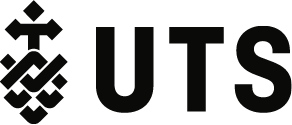UTS takes the position that we need to prioritise preparing our students to engage critically and ethically with GenAI. The expectation remains that students will always present their own work for assessment. However, teachers are expected to clearly articulate where and how GenAI may be used. Some assessments may be designed to be secured and GenAI use may be restricted for those assessments with clear communication to students about expectations.
An upcoming curriculum transformation process will help you review your assessment practices in more depth. In the meantime, for the upcoming Spring 2025 session, we recommend the following 5 steps to ensure your students understand the requirements relating to use of GenAI tools in each assessment task in your subject.
1. Specify the permitted GenAI usage in each assignment
Permitted use changes across different subjects and different tasks, so we can’t expect students to know what’s allowed for a particular assessment unless we’ve made it clear to them. Discuss what is and isn’t allowed in class so students get a chance to ask questions and clarify any grey areas.
2. Decide if/how you want students to acknowledge GenAI use
As a general rule, we don’t encourage students to cite GenAI as a source of information because we want them to learn to find suitable sources and evaluate their credibility. However, you may wish to encourage students to acknowledge how they have used GenAI tools to help you give feedback on the effectiveness of their process.
3. Make students responsible for verifying their references
Fabricated references constitute academic misconduct regardless of whether GenAI was used or can be proven. Where possible, every reference should have a DOI or other hyperlink to assist verification.
4. Clarify that students are accountable for their work
GenAI use in many workplaces is increasing rapidly, so students are likely to use it in various ways to complete tasks. But they will always remain accountable for the quality and accuracy of the work they do. Also, as per UTS Policy, students are responsible for their own learning (regardless of GenAI use), so they need to be able to reflect on how the processes they use help or hinder their learning.
5. Help students understand what using AI ethically and effectively looks like
This is such a new technology that even as teachers many of us are not sure what effective use looks like. But we do know what an effective lab report, client brief, research proposal etc. looks like. And we know the importance of using credible evidence and valid data to build an argument and support a case. We can make a start by helping students understand what the end result should look like, and help them navigate and document the decision-making process along the way.
Find out more
To get some tips and examples on addressing these 5 steps, head to our ‘Preparing for next session’ page on the Education Hub SharePoint site.
You can also visit the Academic Integrity and Education Portfolio Professional Learning sites for more ideas and additional learning and teaching development and support, as well as some introductory Canvas modules if you want to learn more about the basics of GenAI.
The Student misconduct and appeals site on Sharepoint has a wealth of clearly organised information and updates covering key concepts, processes and practical advice, including the latest information about GenAI tools. For advice about any aspect of the student misconduct and appeals process at UTS and training options, contact the Student Misconduct and Appeals team.
